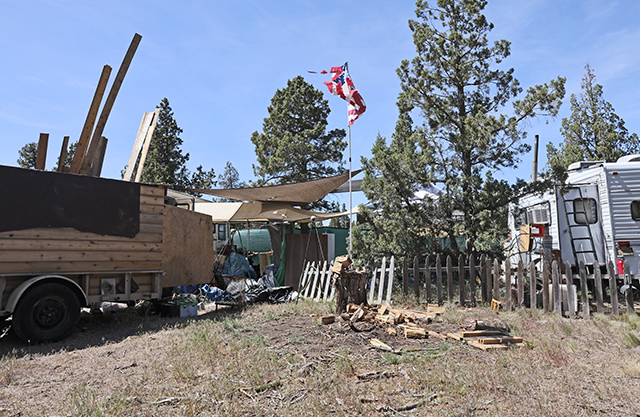Quick wits and quick feet help shorter players thrive
Published 12:00 am Sunday, June 22, 2014
The women’s final of the 2014 French Open was about to begin, and Maria Sharapova and Simona Halep posed for pictures at the net.
“That doesn’t even look fair,” said Mary Carillo, commenting on the match for U.S. television, referring to the height difference between Sharapova, who is 6 feet 2 inches, and Halep, who is 5-6.
Carillo has a quick wit, but her comment also tapped into the common perception that height makes right in modern tennis, an ever more demanding sport in which players’ power, reach and athleticism are increasing.
The trend, particularly on the men’s side, is clear, but a funny thing has happened on the road to a taller player pool: Shorter players have continued to thrive.
Halep versus Sharapova was definitely a fair match. It was the most compelling French Open women’s final in more than a decade, with Sharapova winning, 6-4, 6-7 (5), 6-4. Halep, an all-court talent who has won five tour titles in the past 12 months, is now entrenched at No. 3 in the rankings.
As Wimbledon begins Monday, she is not alone. Dominika Cibulkova, at 5-3, reached the final of the Australian Open in January and remains in the top 10.
Sara Errani, a former French Open finalist who is slightly taller than 5-4, reached the final in Rome and is ranked 14th.
Marion Bartoli was the surprise winner at Wimbledon last year before retiring at 28 in August. Asked how the shorter set was managing, the 5-7 Bartoli pointed to her temple.
“It’s in the head,” she said. “It’s about playing intelligently.”
On the men’s tour, the 5-9 David Ferrer has been joined in the top 15 by two 5-10 players: Kei Nishikori, the dynamic Japanese star, and Fabio Fognini, the combustible Italian.
“I think it’s a misnomer that small players can’t play tennis at the highest level,” said Michael Chang, a former French Open champion, who coaches Nishikori. “If it was something like basketball, I would say probably it’s a little more difficult, but tennis will always be a thinking man’s game, and even though taller, bigger, stronger players may be able to hit it faster and harder and maybe have a bigger serve, there are always ways of neutralizing that. For me, I’ve had to do it all my life.”
The 5-9 Chang peaked at No. 2 in the world and reached three other Grand Slam singles finals after winning in Paris in 1989. He succeeded with competitive drive and technical skill. He did it with great returns and by leaping off the court for ground strokes or taking the ball early off the bounce to keep it from going too high above his shoulders and his optimal hitting zone. Above all, Chang did it by using his speed and top-notch footwork as a weapon.
“I’d much rather be 6-3 and a good athlete in tennis than 5-9 and a good athlete,” said Jose Higueras, the director of coaching for the U.S. Tennis Association. “But at the same time, people that are a little smaller, I think because of necessity they have to have a better understanding of how to play. I think sometimes the ones who are not very gifted sizewise are more resourceful in terms of defense and how they play the percentages.”
The Hall of Fame coach Nick Bollettieri said last year that of the scores of players he had helped, “Xavier Malisse, Marcelo Ríos and Nishikori were the best shotmakers.”
Nishikori, who remains injury-prone, is more of an attacking player at heart than Chang, but he shares that reliance on speed and aggressive footwork.
“Speed does make up for a lot,” Chang said. “The bigger guys aren’t going to be as fast, and if you take advantage of that speed in not just a defensive way but in an offensive way, that can work wonders. Because all of the sudden if you use it the right way, bigger guys, if they are not able to get to the ball the right way, they cannot make use of that offensive power.”
According to the ATP Tour, the average height of the men in the year-end top 50 climbed more than an inch and a half from 2003 to 2013. More players are also exceptionally tall now.
In 2003, no players taller than 6-5 ranked in the year-end top 50. Last year, there were six, including the 6-10 American John Isner.
The tale of the tape reads differently for the women. According to figures for the top 10 provided by the WTA, the average height in mid-June 1994 was 5-8. By the equivalent week in 2004, it had risen to 5-9 1⁄4.
This week, it is again at that 5-9 average, even with athletes like Sharapova and the 6-footers Victoria Azarenka and Petra Kvitova in the mix.
Cibulkova, No. 10 at the moment, brings the average down.
“She takes the ball very early,” said Harold Solomon, a former top-10 men’s player and a longtime leading women’s coach. “And for a little woman, her legs are like Serena’s legs. So she has a very strong lower body, and she’s quick. She attacks. She’s not a counterpuncher necessarily. She’s looking to go after balls all the time. She’s not going to be successful all the time. She’s going to play bigger girls and get knocked off the court sometimes.
“But she’s done amazingly well, worked really hard and trains like a maniac. She’s got a great attitude, a little fighter attitude, more a guy’s attitude to some degree: in your face all the time.”
Solomon, now 5-5 but 5-6 in his playing days, was one of the shortest men to have great success in the Open era, reaching No. 4 and the French Open final in 1976.
“I don’t think it’s going to happen again for a man of my size,” he said. “It’s just too hard on a consistent basis. Athletes will continue to get bigger, faster and stronger, but I do think there will continue to be exceptions.”
Patrick McEnroe, the former pro who manages player development for the USTA, said he believed the women’s game was more conducive to shorter players’ success than the men’s game because the serve was often less of a factor. Few women also hit big kick serves or hit ground strokes with heavy topspin, so it is easier for a shorter player to make contact with the ball below shoulder height.
Justine Henin, who won six Grand Slam singles titles in the 2000s before retiring in 2011, is 5-5 and often faced off against Lindsay Davenport, at 6-2, and Venus Williams, at 6-1.
They also sometimes elicited a few chuckles when they lined up for photographs at the net. But those were fair fights, just like Halep’s glorious tussle with Sharapova in Paris.






